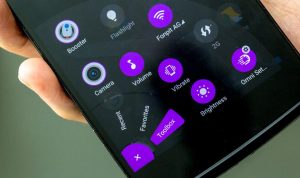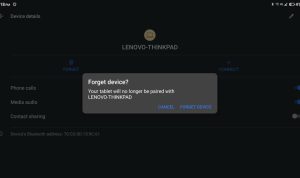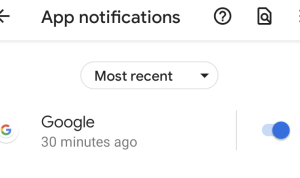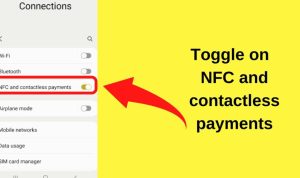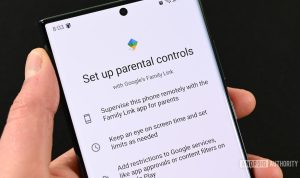The Best Android Launchers for Customization offer an exciting gateway into personalizing your mobile experience. With a plethora of options available, these launchers allow users to tailor their devices to match their unique preferences and styles. From sleek designs to innovative features, customization is key to enhancing usability and overall enjoyment of Android devices.
As we explore the world of Android launchers, we will delve into what they are, the importance of customization, and highlight some of the most popular launchers in the market today. This guide will equip you with the knowledge necessary to elevate your Android experience.
Overview of Android Launchers
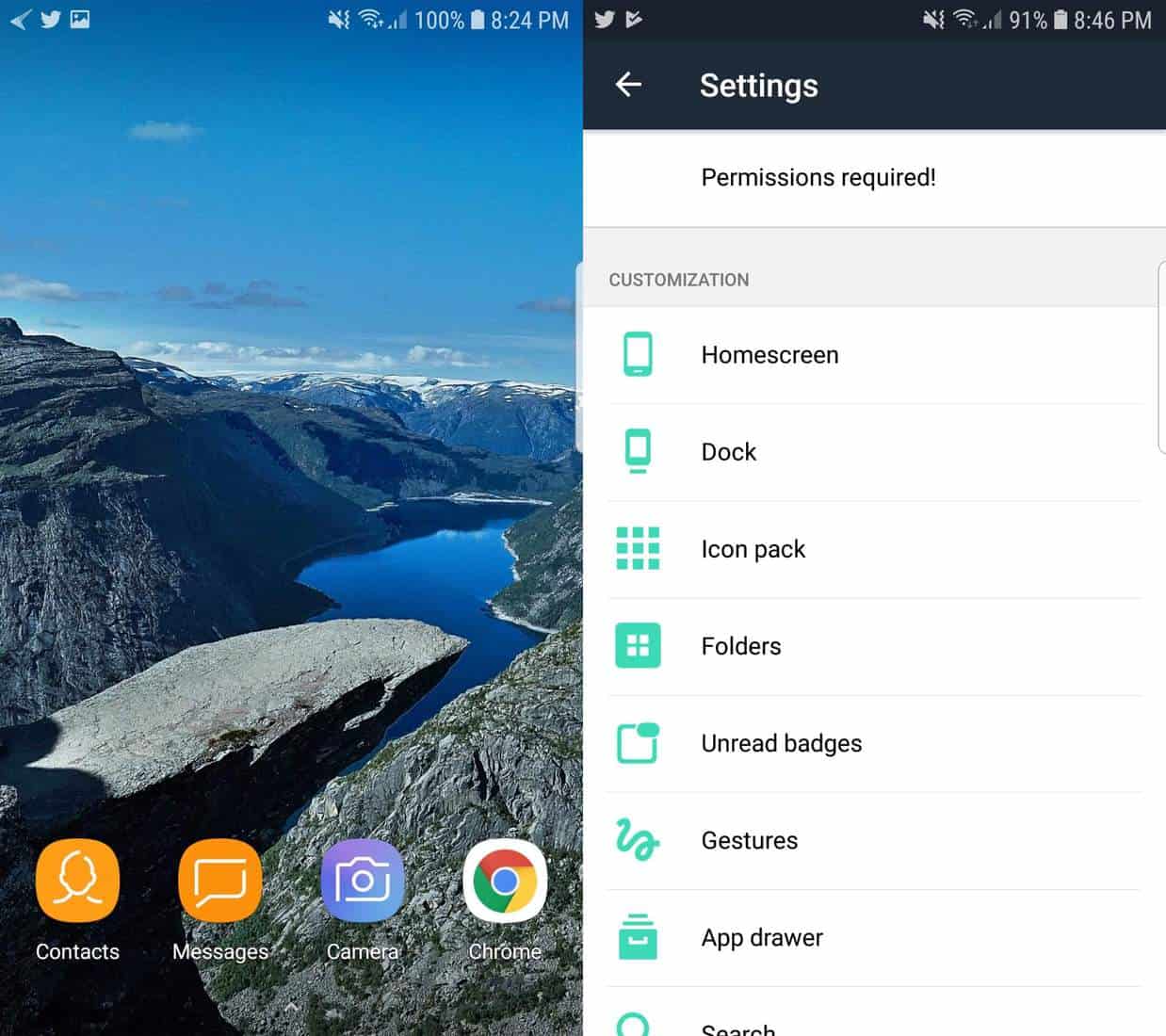
Android launchers serve as the primary interface through which users interact with their devices, allowing them to customize the appearance and functionality of their home screens and app drawers. By enabling users to modify elements such as app icons, layouts, and animations, launchers enhance the overall user experience. They allow for personalization that reflects individual preferences and styles, offering a unique way to engage with technology.Customization plays a crucial role in enhancing user experience on Android devices.
By tailoring the interface to suit personal tastes, users can create a more intuitive environment that simplifies navigation and boosts productivity. The ability to change themes, icon packs, and widgets empowers users to make their devices not only more functional but also visually appealing. Such customization can lead to improved user satisfaction and efficiency.
Popular Android Launchers
Several Android launchers stand out in the market, each offering unique features that cater to different user needs. Here are some notable options:
- Nova Launcher: Known for its versatility, Nova Launcher allows users to customize their home screens extensively, offering options to adjust grid sizes, icon shapes, and even scroll effects. It’s particularly favored by users who appreciate a minimalist and efficient design.
- Microsoft Launcher: This launcher integrates well with Microsoft services, making it ideal for users heavily invested in the Microsoft ecosystem. It features a customizable feed and supports personalized news and calendar events.
- Action Launcher: Action Launcher focuses on quick access to apps and features with its unique Quicktheme and Covers functionalities. It provides a blend of customization and simplicity, appealing to users looking for efficiency.
- Apex Launcher: Apex Launcher is recognized for its sleek interface and customization options, including app drawer settings and transition effects. It also supports various themes and icon packs, allowing for a personalized touch.
- Smart Launcher: Emphasizing simplicity and ease of use, Smart Launcher organizes apps into categories and features a minimalist design. It’s perfect for those who prefer a straightforward approach without compromising on customization options.
These launchers exemplify the diverse choices available, each tailoring to different user preferences and enhancing the Android experience through customization.
Key Features of Customization
Customization is a core advantage of using Android devices, and launchers amplify this potential significantly. Users seek launchers that not only allow them to personalize their home screens but also provide an enjoyable and intuitive experience. Key features that enhance the customization capabilities of launchers include themes, icon packs, widgets, and various layout options. Together, these features create a unique interface that reflects individual style and preferences.The impact of themes, icon packs, and widgets cannot be overstated.
Themes alter the entire aesthetic of the device, providing options for colors, backgrounds, and styles that can transform the user experience. Icon packs offer alternative designs for app icons, which can be tailored to match the chosen theme or the user’s preference, making the interface more cohesive. Widgets contribute to functionality by allowing users to access information and features directly from the home screen, enhancing both personalization and usability.
Customization Options Comparison, The Best Android Launchers for Customization
To better understand the variety of customization options available across different Android launchers, the following table highlights key features of popular launchers in the market today. This comparison showcases how each launcher supports themes, icon packs, and widgets, helping users make informed decisions based on their customization preferences.
| Launcher Name | Themes Available | Icon Packs Support | Widgets Customization | Additional Features |
|---|---|---|---|---|
| Nova Launcher | Extensive library of themes | Supports third-party icon packs | Highly customizable widget sizes | Gestures, folder styles, and backup options |
| Microsoft Launcher | Integrated Microsoft themes | Limited icon pack support | Widgets for calendar, news, and more | Personalized feed and integration with Microsoft services |
| Lawnchair | Custom themes available | Compatible with various icon packs | Flexible widget configurations | Google Assistant integration and desktop-style layout |
| Apex Launcher | Many themes to choose from | Supports various icon packs | Customizable widget sizes and placement | App drawer customization and transitions |
“Customization empowers users to create a mobile experience that resonates with their personal identity.”
This table serves as a reference point for users looking to enhance their Android experience with the right launcher that meets their needs in terms of customization.
Top Android Launchers for Customization
Exploring the world of Android launchers opens up a realm of personalization that enhances user experience. With various options available, users can modify their devices to suit their tastes and needs. Here, we’ll delve into some of the best Android launchers known for their customization capabilities, highlighting unique features that set them apart.
Nova Launcher
Nova Launcher stands out for its sleek design and extensive customization options. It’s a go-to choice for many users looking to personalize their home screens and app drawers.
Unique Features
Endless customization possibilities for icons, layouts, and animations.
Gesture controls for quick access to apps and actions.
Integration with third-party icon packs for a unique look.
User Ratings and Reviews:
- ★★★★★
- “The best launcher I’ve ever used, so customizable!”
- ★★★★☆
- “A bit overwhelming at first, but worth the learning curve.”
- ★★★☆☆
- “Missing some features I expected, but still solid.”
Action Launcher
Action Launcher offers a distinctive blend of speed and customization. It focuses on a streamlined user experience while still providing a range of personalization options.
Unique Features
Quicktheme to match your launcher colors with your wallpaper.
Covers for app shortcuts, allowing for efficient space usage.
Shutters for quick access to widgets without cluttering home screens.
User Ratings and Reviews:
- ★★★★★
- “Love the unique features like Quicktheme!”
- ★★★★☆
- “Great performance, but could use more icon options.”
- ★★★☆☆
- “Effective but lacks some depth in customization.”
Lawnchair 2
Lawnchair 2 is an open-source launcher aiming to provide a Pixel-like experience while allowing for significant customization. It’s perfect for those who want a simple yet versatile launcher.
Unique Features
Adaptive icons that maintain consistency with the overall look.
Google Assistant integration for quick access.
Customizable app drawer and dock for ease of use.
User Ratings and Reviews:
- ★★★★★
- “Finally, a launcher that feels like stock Android with added features!”
- ★★★★☆
- “Good for a free option, but could be more refined.”
- ★★★☆☆
- “Some bugs but overall a solid launcher.”
Microsoft Launcher
Microsoft Launcher is designed for users seeking a seamless experience across devices, particularly those who use Microsoft services. Its customization options are well-integrated with productivity features.
Unique Features
Customizable feed that pulls in news and calendar events.
Seamless integration with Office 365 and other Microsoft applications.
Personalization options for themes and icon packs.
User Ratings and Reviews:
- ★★★★★
- “Perfect for those invested in the Microsoft ecosystem.”
- ★★★★☆
- “Great for productivity, but less customizable than others.”
- ★★★☆☆
- “Very functional but not as visually appealing.”
Apex Launcher
Apex Launcher is another highly regarded option, known for its balance between performance and customization. It’s user-friendly and caters to a wide range of customization needs.
Unique Features
Customizable grid size for home screens and app drawers.
Various transition effects to enhance the visual experience.
Built-in theme support and ability to create your own themes.
User Ratings and Reviews:
- ★★★★★
- “Fantastic performance and solid customization options!”
- ★★★★☆
- “Could improve in terms of ease of use for beginners.”
- ★★★☆☆
- “Not as feature-rich as some competitors, but gets the job done.”
How to Install and Set Up a Launcher: The Best Android Launchers For Customization
Installing a new launcher on your Android device can significantly enhance your user experience by providing customization options that the default interface may lack. This process involves downloading the launcher from the Google Play Store and configuring it to suit your personal style. After you have chosen the launcher that appeals to you, follow these steps to install and set it up effectively.
Step-by-Step Installation of a Launcher
Begin by ensuring your device is connected to the internet. The installation process is straightforward:
- Open the Google Play Store on your device.
- Search for the launcher you want to install by typing its name in the search bar.
- Select the launcher from the search results and tap on the Install button.
- Wait for the installation to complete. Once done, you can find the launcher in your app drawer.
- Tap on the launcher icon to open it. The first time you launch it, you may be prompted to set it as your default home screen. Choose this option to activate the launcher.
Setting Up Customization Options
Once your new launcher is installed, the next step is to customize it according to your preferences. Most launchers come equipped with a variety of options that allow you to personalize your device:
1. Home Screen Layout
Long-press on the home screen to access layout options. You can add, remove, or rearrange widgets and app icons.
2. Themes and Icon Packs
Navigate to the settings of the launcher, typically accessible from the home screen. Here, you can choose themes and download icon packs that give your apps a fresh look.
3. Gestures
Customize how you can navigate your device. Many launchers allow you to set gestures for actions like opening specific apps or accessing settings.
4. Folders
Group similar apps into folders for better organization. Simply drag one app icon over another to create a folder.
5. Wallpaper
Change your wallpaper to match the new theme. This can often be done directly from the launcher’s settings or by long-pressing on the home screen.
“Choose a launcher that aligns with your usage habits. A well-suited launcher can transform your device into a highly productive tool.”
The installation and setup process for a new launcher can seem daunting at first, but taking it step-by-step will make it manageable. Whether you’re looking for aesthetic changes or enhanced functionality, your device can be tailored to meet your individual needs.
Advanced Customization Techniques
Advanced customization techniques allow users to take their Android experience to the next level. While basic settings provide a solid foundation for personalization, exploring advanced methods can unveil a wealth of unique styles and functionalities. Users can not only transform the appearance of their device but also enhance its usability to better fit their lifestyle.Diving into advanced customization involves manipulating settings and features that are not typically available through the standard launcher interface.
By using third-party applications, users can access a myriad of options to tweak their launchers, creating a truly individualized experience. These enhancements can range from changing icon packs and themes to altering animations and widget placements, thus providing a fresh and vibrant user interface.
Third-Party Apps for Enhanced Customization
Third-party apps play a crucial role in expanding the customization capabilities of Android launchers. These applications often offer specialized features that allow for deeper alterations beyond what standard launchers provide. They enable users to tailor their devices to their preferences, making it possible to create a unique ecosystem reflective of personal style and functionality.Here’s a table showcasing popular third-party apps along with their functions:
| App Name | Function |
|---|---|
| Nova Launcher | Highly customizable home screen, icon packs, and gesture controls. |
| KWGT Kustom Widget Maker | Create custom widgets with various options for styles and data displays. |
| Zooper Widget | Customizable widgets that allow for unique designs and layouts. |
| Icon Pack Studio | Create personalized icon packs to match your style. |
| Tasker | Automate tasks and create custom actions based on triggers. |
Using these apps, users can customize everything from the basic layout to intricate details, ensuring that no two devices look or behave the same. For example, Nova Launcher allows for the use of custom gestures to perform specific tasks, while KWGT enables widget creation that can show live data or control apps right from the home screen.
“Customization is not just about aesthetics; it’s about creating a device that works for you.”
Leveraging these advanced techniques and third-party tools can significantly enhance the Android experience, making it not just functional but also visually appealing and reflective of individual personality.
Troubleshooting Common Issues
Using Android launchers can greatly enhance your device’s customization, but sometimes, users run into issues that can disrupt their experience. This section focuses on identifying common problems and providing effective solutions to help you navigate them smoothly. Despite their flexibility and features, launchers can sometimes lead to unexpected behaviors. These may include performance lag, app crashes, or difficulty in restoring the default launcher.
Understanding these challenges can empower you to troubleshoot effectively and enjoy a seamless user experience.
Common Issues with Android Launchers
Several common issues may arise while using Android launchers. Here are some frequent challenges and their solutions:
Performance Lag
Some launchers may slow down your device, especially if they are resource-intensive. This can occur due to limited hardware capabilities or conflicts with other apps.
Solution
Consider using a lightweight launcher or adjusting the settings to reduce animations and effects.
App Crashes
Occasionally, certain apps may not function correctly after installing a new launcher, leading to crashes or unresponsive behavior.
Solution
Clear the app cache or data for the affected app through the settings menu. If issues persist, try reinstalling the app.
Default Launcher Issues
Users often struggle to revert to their original launcher after trying a new one, with the default settings not restoring properly.
Solution
Go to your device’s settings, find the ‘Apps’ section, locate the current launcher, and select ‘Clear defaults.’ This should allow you to choose your original launcher again.
Incompatibility with Widgets
Some launchers may not support specific widgets, causing them to appear distorted or not at all.
Solution
Check the launcher’s compatibility with the widgets you want to use or consider switching to a launcher known for better widget support.To minimize potential problems while using Android launchers, consider the following best practices:
- Regularly update your launcher to the latest version for bug fixes and improvements.
- Read user reviews before installing a new launcher to understand potential issues.
- Create backups of your home screen setup to restore settings quickly if needed.
- Test the launcher in safe mode to check for compatibility with other apps.
- Limit the number of widgets and live wallpapers to save system resources.
“Prevention is better than cure; keeping your launcher updated can save you from many headaches.”
By keeping these tips in mind, you can enhance your Android launcher experience and troubleshoot common issues effectively.
Future Trends in Android Customization
The landscape of Android customization is continually evolving, with new trends shaping how users interact with their devices. As technology advances, the demand for personalization in mobile experiences becomes more pronounced. Future trends are likely to focus on enhancing user satisfaction through innovative features and smarter technologies.One of the most significant trends on the horizon is the integration of artificial intelligence (AI) into Android launchers.
AI has the potential to dramatically enhance user experience by learning individual preferences and habits, tailoring the interface and functionality to suit each user’s needs. This smart adaptation could lead to a more intuitive and efficient interaction with devices.
Artificial Intelligence in Android Customization
The incorporation of AI will revolutionize Android customization by offering solutions that respond to user behaviors. AI-driven launchers will analyze usage patterns to recommend apps, settings, and even customizations that fit the user’s routine. For example, if a user frequently checks their calendar in the morning, the launcher could automatically place this app front and center on the home screen during that time.AI could also support voice recognition features, allowing users to interact with their launchers hands-free.
This accessibility feature can significantly improve the user experience for those with disabilities or for users who prefer hands-free operation while multitasking. Additionally, predictive capabilities will likely emerge, where launchers anticipate what the user might need next. This could be anything from suggesting music based on the time of day to changing themes according to the weather.
Upcoming Features in Android Launchers
The future of Android launchers is set to introduce various innovative features designed to enhance customization. Here are some anticipated developments:
- Dynamic Themes: Launchers may adopt themes that change dynamically based on time, location, or even mood. For instance, a dark theme could automatically activate at night, improving battery life and reducing eye strain.
- Gesture Controls: Advanced gesture recognition could make navigation more intuitive, enabling users to swipe or pinch to access different features without needing to tap on icons.
- Augmented Reality Integration: Imagine using your camera to place widgets that blend into your environment. This AR feature could allow users to visualize widgets in their actual space before adding them to their home screen.
- Enhanced Widget Customization: Users might be able to create and customize widgets with greater freedom, including the ability to design their layouts and functionalities without coding knowledge.
- Smart App Suggestions: Leveraging AI, future launchers will likely offer app suggestions based on current usage trends, making it easier to access frequently used apps quickly.
These developments will not only provide more options for personalization but will also lead to a more streamlined and efficient user experience. As Android customization continues to advance, it is clear that the future holds exciting possibilities for how users interact with their devices.


